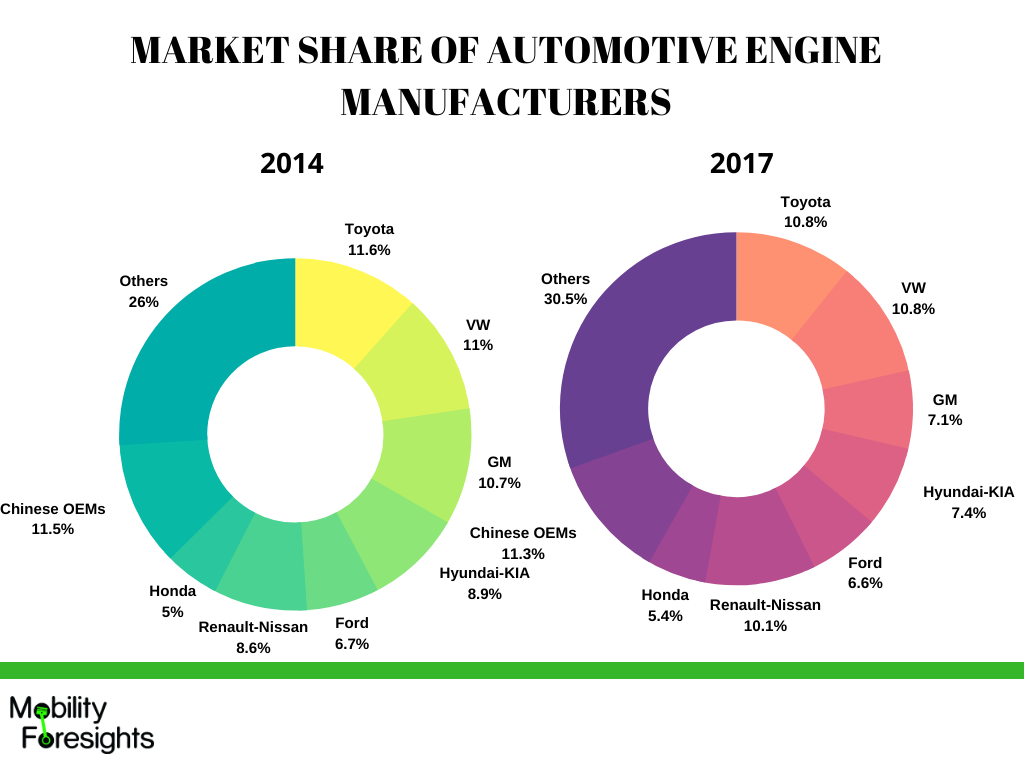The China Factor: Analyzing The Automotive Industry's Struggle In The Chinese Market

Table of Contents
Intense Domestic Competition
The Chinese automotive market is fiercely competitive, driven by the meteoric rise of domestic brands and a saturated market leading to intense price wars.
Rise of Domestic Brands
Chinese automakers have made significant strides in recent years, leveraging cost-effectiveness, government support, and increasingly sophisticated technology to gain significant market share.
- BYD: A leader in electric vehicles (EVs), BYD boasts innovative battery technology and a rapidly expanding product range.
- Geely: Owning brands like Volvo, Geely demonstrates successful international expansion and a focus on advanced technologies.
- NIO: A prominent player in the premium EV segment, NIO offers advanced features and a compelling customer experience.
These brands are not just competing on price; they are also leveraging advanced technologies like AI-powered driver assistance systems and connected car features, directly challenging the technological dominance often associated with foreign brands. This aggressive competition necessitates a strong focus on innovation and adaptation for foreign players.
Price Wars and Market Saturation
The intense competition has resulted in aggressive price wars, squeezing profit margins for all players, particularly foreign automakers.
- Market share fluctuations are common, with domestic brands rapidly gaining ground.
- Profitability is under significant pressure due to the constant need to undercut competitors.
- Foreign companies are responding by focusing on niche segments, premium positioning, and offering unique value propositions beyond mere pricing.
This saturated market demands a well-defined strategy that goes beyond simple price competition. Foreign automakers must demonstrate a compelling value proposition that resonates with Chinese consumers beyond competitive pricing.
Navigating Regulatory Hurdles and Government Policies
The Chinese automotive market is characterized by a complex regulatory landscape and government policies that often favor domestic brands.
Complex Regulatory Landscape
Navigating Chinese regulations requires significant time, resources, and expertise.
- Stringent emission standards and increasingly demanding safety requirements pose a significant challenge.
- Import tariffs and other trade barriers increase the cost of entry and operation for foreign companies.
- Bureaucratic processes can be lengthy and complex, adding delays and uncertainties.
The intricacies of the regulatory environment demand a proactive approach and the expertise to successfully navigate the complexities. Compliance is paramount for survival in this market.
Government Incentives and Subsidies
Government policies actively promote the growth of domestic brands through various incentives and subsidies.
- Significant subsidies are offered for the purchase of domestically produced EVs, giving a competitive edge to Chinese brands.
- Tax breaks and other preferential treatment are frequently provided to domestic automakers.
- This creates an uneven playing field, making it challenging for foreign automakers to compete effectively.
Understanding and adapting to these government policies is vital for developing a successful strategy in the Chinese market.
Understanding Consumer Preferences and Cultural Nuances
Successfully competing in China requires a deep understanding of evolving consumer preferences and cultural nuances.
Shifting Consumer Demands
Chinese consumers are increasingly tech-savvy and demand advanced features and connectivity in their vehicles.
- Electric vehicles (EVs) are gaining immense popularity, driven by government incentives and increasing environmental awareness.
- Advanced driver-assistance systems (ADAS) and other technologically advanced features are highly sought after.
- Connectivity and infotainment systems are crucial components influencing purchasing decisions.
Meeting and exceeding these expectations requires significant investment in R&D and localization to create products tailored to Chinese consumer demands.
Cultural and Branding Challenges
Adapting marketing and branding strategies to resonate with Chinese consumers is essential for success.
- Understanding local cultural values and consumer behavior is crucial for effective marketing campaigns.
- Effective translation of brand messaging and values is often critical for conveying the desired image.
- Building trust and establishing a strong brand reputation takes time and a deep understanding of the local market.
Effective localization, brand building and culturally relevant marketing are critical for long-term success in this dynamic market.
Conclusion
The "China Factor" presents significant challenges to foreign automakers. Intense domestic competition, complex regulations that favor local brands, and evolving consumer preferences all demand a strategic and nuanced approach. Successfully navigating this market requires a deep understanding of the local context, a willingness to adapt products and marketing strategies, and a long-term commitment to building strong relationships with Chinese consumers. To succeed, foreign automakers must go beyond simple market entry strategies and focus on localization, innovation, and a profound understanding of the intricacies of the Chinese market. Further research into these specific challenges and potential solutions is essential for achieving long-term success in the face of the "China Factor." Explore resources on Chinese automotive regulations, consumer trends, and successful localization strategies to gain a competitive edge in this crucial market.

Featured Posts
-
 Nfl Combine Steelers Key Focus On Finding George Pickens Long Term Replacement
May 07, 2025
Nfl Combine Steelers Key Focus On Finding George Pickens Long Term Replacement
May 07, 2025 -
 Impact Of Expanded Manufacturing Tax Credits On Ontario Businesses
May 07, 2025
Impact Of Expanded Manufacturing Tax Credits On Ontario Businesses
May 07, 2025 -
 The Julius Randle Difference Timberwolves Vs Knicks Strategies
May 07, 2025
The Julius Randle Difference Timberwolves Vs Knicks Strategies
May 07, 2025 -
 Samsonovs Anxiety Will He Be The Goalie To Concede Ovechkins Record
May 07, 2025
Samsonovs Anxiety Will He Be The Goalie To Concede Ovechkins Record
May 07, 2025 -
 Is A Pittsburgh Steelers Wide Receiver Headed Out The Door During The Nfl Draft
May 07, 2025
Is A Pittsburgh Steelers Wide Receiver Headed Out The Door During The Nfl Draft
May 07, 2025
